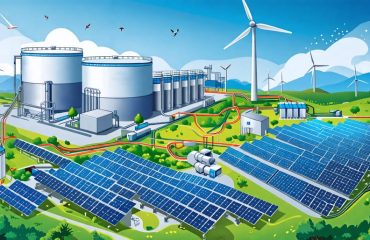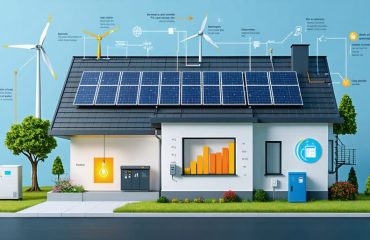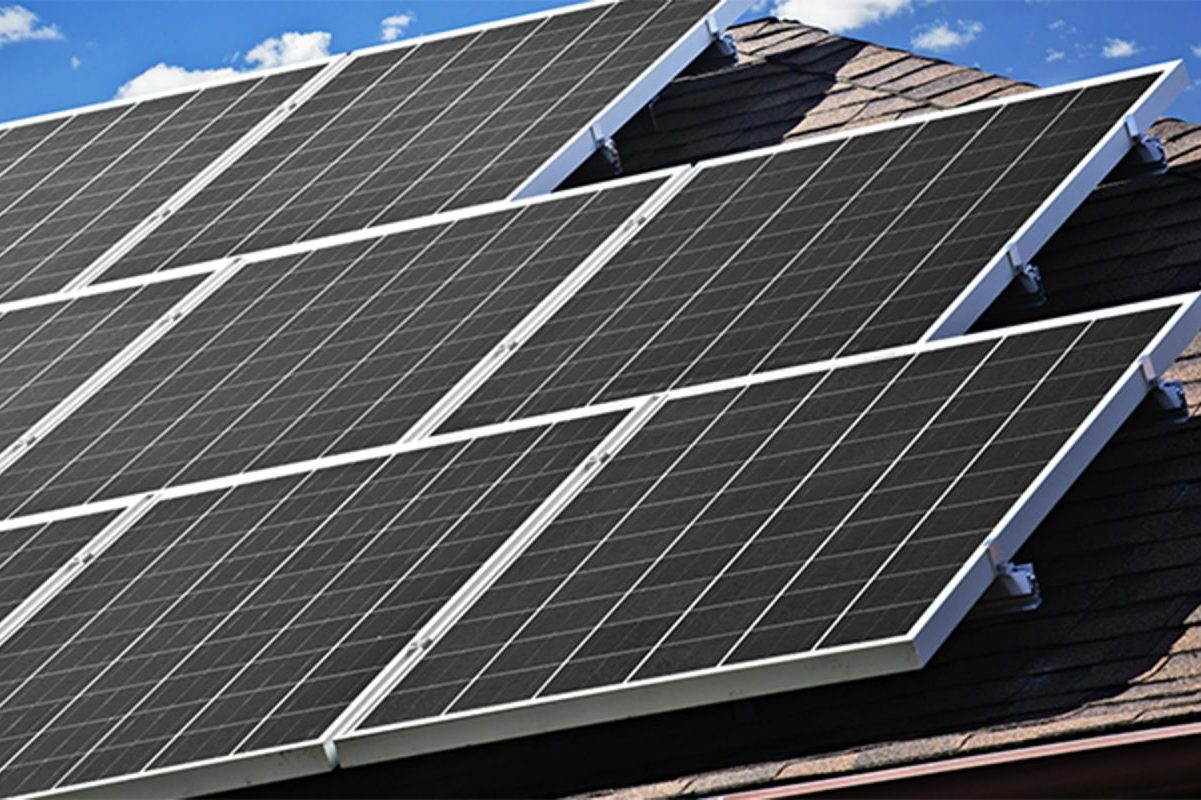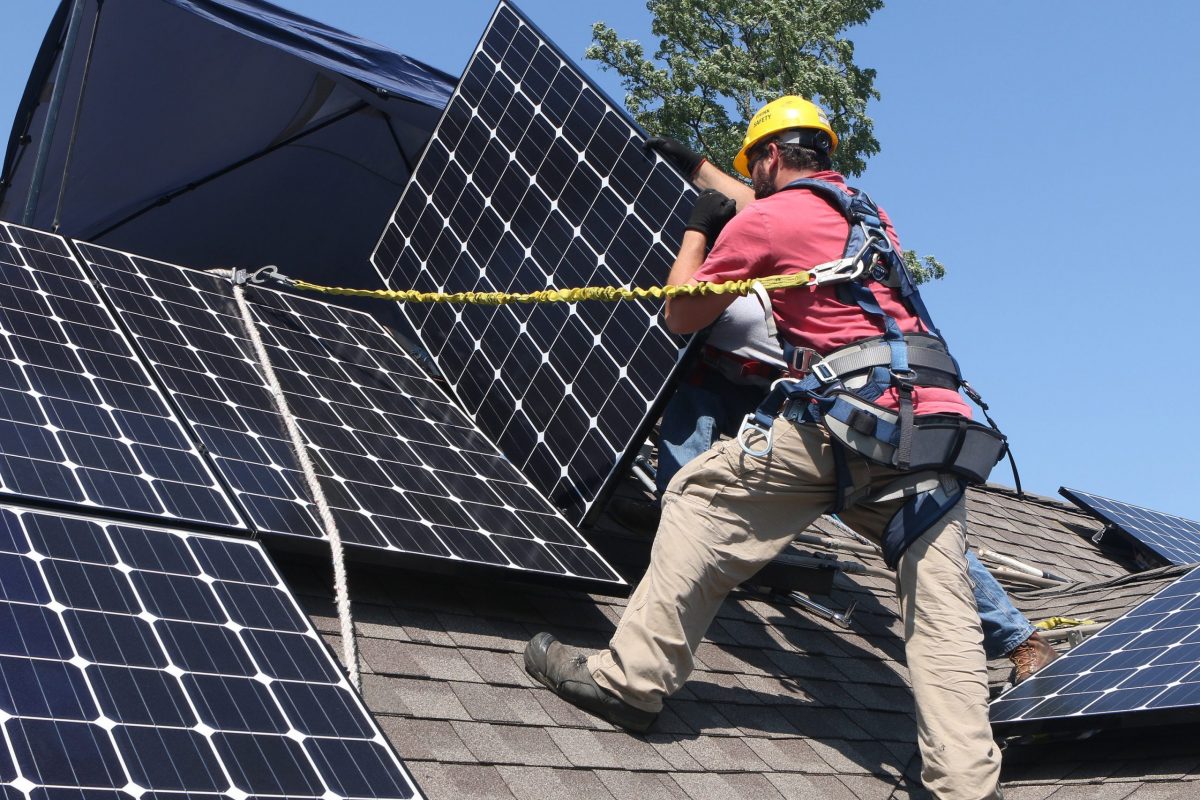Grid-scale energy storage represents one of the most transformative solutions in our transition to renewable energy, acting as the crucial bridge between intermittent power sources and reliable electricity delivery. As solar panels and wind turbines increasingly power our communities, massive battery systems and other storage technologies are becoming the unsung heroes of the modern grid, capable of storing excess energy during peak production and releasing it when demand surges.
Think of grid-scale storage as a giant rechargeable battery for entire cities – but instead of powering a smartphone for a day, these systems can power thousands of homes for hours or even days. This technology doesn’t just keep the lights on; it’s revolutionizing how we think about energy distribution, grid reliability, and the economics of renewable power.
From utility-scale battery installations to innovative pumped hydro facilities, these storage solutions are rapidly becoming the backbone of a more resilient, sustainable, and cost-effective energy future. For homeowners and businesses alike, this means more stable electricity prices, fewer outages, and a cleaner environment.

How Grid-Scale Storage Transforms Power Distribution
Peak Load Management
Peak load management is one of the most valuable benefits of grid-scale energy storage systems. During times of high electricity demand, such as hot summer afternoons when air conditioners are running at full blast, the power grid can become strained trying to meet everyone’s needs. Energy storage acts like a backup reservoir, releasing stored power during these peak periods to help balance the load.
Think of it as a pressure-relief valve for the electrical grid. When demand spikes, storage systems can quickly deliver additional power, preventing blackouts and reducing the need to fire up expensive “peaker plants” that typically only run during high-demand periods. This not only makes the grid more reliable but also helps keep electricity costs down for consumers.
Storage systems can be charged during off-peak hours when electricity is cheaper and abundant, then discharged during peak times when power is most needed. This load-shifting capability helps utilities better manage their resources and maintain a stable power supply throughout the day, benefiting both the grid operators and end users.
Renewable Energy Integration
Grid-scale energy storage plays a crucial role in maximizing the potential of renewable energy sources. As more communities embrace solar and wind power, storage systems help overcome their inherent intermittency challenges. These solutions ensure reliable solar power integration by storing excess energy during peak production times for use when the sun isn’t shining or the wind isn’t blowing.
Modern storage systems act like giant batteries for the power grid, collecting renewable energy during optimal conditions and releasing it strategically to match demand. This capability transforms variable renewable sources into dependable power supplies that can compete with traditional fossil fuel plants. For example, during a sunny afternoon, solar farms might generate more electricity than needed. Instead of wasting this clean energy, storage systems capture it for use during evening peak hours or cloudy days.
This breakthrough has made renewable energy more practical and cost-effective for utilities and communities. It reduces the need for backup fossil fuel plants and helps maintain stable electricity prices, making clean energy a more attractive option for everyone.

Safety Benefits of Grid Storage
Backup Power During Outages
Grid-scale energy storage plays a crucial role in preventing blackouts and maintaining essential services during power outages. When the main power grid experiences disruptions, these systems act as massive backup power systems, seamlessly switching on to provide electricity to homes, hospitals, and critical infrastructure.
During severe weather events or unexpected grid failures, storage facilities can discharge their stored energy within milliseconds, preventing service interruptions and maintaining power quality. This rapid response capability ensures that vital facilities like emergency services, telecommunications centers, and water treatment plants continue operating without disruption.
For communities with solar installations, energy storage systems offer an additional layer of reliability. They store excess solar power generated during sunny periods, making it available during cloudy days or nighttime hours. This combination of renewable energy and storage technology creates a more resilient and dependable power network that benefits everyone, from individual homeowners to entire communities.
Modern grid storage solutions can sustain power delivery for several hours or even days, depending on their capacity and the community’s energy needs. This reliability has made them an increasingly popular choice for utilities and municipalities focused on strengthening their power infrastructure.
Voltage Regulation
Power quality is crucial for our modern electrical devices, and grid-scale energy storage plays a vital role in maintaining stable voltage levels. Think of voltage regulation like maintaining steady water pressure in your home – too much or too little can cause problems with your appliances.
Storage systems act as shock absorbers for the electrical grid, smoothing out voltage fluctuations that occur when demand changes or renewable energy sources vary their output. When solar panels or wind turbines produce sudden surges of power, storage systems can absorb the excess energy. Conversely, when output drops, they release stored energy to maintain consistent voltage levels.
This stability is especially important for sensitive electronic equipment in homes and businesses. Without proper voltage regulation, you might experience flickering lights, damaged appliances, or reduced efficiency of your electrical devices. Grid-scale storage helps prevent these issues by responding to changes in milliseconds, much faster than traditional power plants can adjust their output.
For homeowners with solar installations, this means more reliable power and better protection for your investments in electronic devices and appliances.
Current Technologies and Future Developments
Battery Storage Systems
Battery storage systems represent one of the most versatile and rapidly growing long-term energy storage technologies available today. These installations consist of multiple high-capacity batteries working together to store excess electricity from the grid, which can be released when demand peaks or during emergencies.
Modern grid-scale battery facilities can store enough power to support thousands of homes, typically using advanced lithium-ion technology similar to what’s found in electric vehicles, just on a much larger scale. These systems can respond to power needs almost instantly, making them ideal for maintaining grid stability when solar and wind power generation fluctuates.
The benefits of battery storage systems are substantial. They help prevent blackouts by providing backup power during outages, reduce the need for expensive peaker plants that run only during high-demand periods, and make renewable energy more practical by storing excess generation for later use. For homeowners with solar panels, these grid-scale installations help stabilize electricity prices and ensure reliable power even when the sun isn’t shining.
As costs continue to decrease and technology improves, battery storage systems are becoming an increasingly vital component of our modern electrical grid.
Alternative Storage Methods
While batteries are making headlines, several proven alternatives have been reliably storing energy for decades. Pumped hydroelectric storage, the most widely used method globally, works like a water battery – pumping water uphill when energy is abundant and releasing it through turbines when needed. This simple yet effective system accounts for over 90% of grid storage capacity worldwide.
Compressed air energy storage (CAES) offers another innovative solution, using excess electricity to compress air in underground caverns or tanks. When power is needed, the compressed air is released to drive turbines, much like a giant air battery. While less common than pumped hydro, CAES systems have operated successfully in Germany and Alabama for decades.
Emerging technologies include flywheel storage, which stores energy in rapidly spinning wheels, and liquid air storage, which cools air until it becomes liquid and later expands it to drive turbines. These alternatives complement traditional methods and newer battery systems, creating a diverse energy storage ecosystem.
Each storage method has unique advantages, from the proven reliability of pumped hydro to the quick response time of flywheels. This variety helps grid operators choose the best solutions for their specific needs and locations.
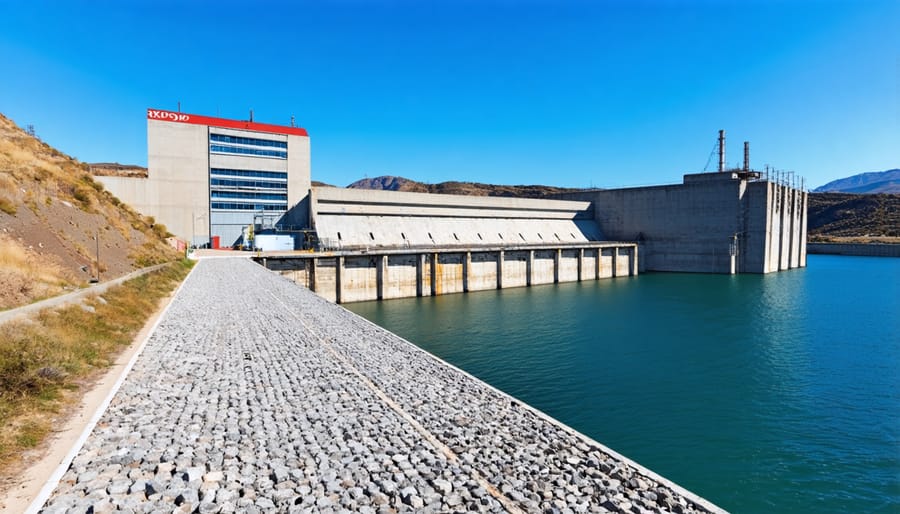
Impact on Residential Solar Users
Grid-scale energy storage systems bring significant advantages to homeowners with solar installations, creating a more efficient and cost-effective renewable energy ecosystem. When the grid incorporates large-scale storage, it becomes better equipped to handle the variable nature of solar power generation, directly benefiting residential solar users in several ways.
First, grid storage helps stabilize electricity prices by reducing peak demand charges. When solar production is high during the day, excess energy can be stored and released during evening hours when residential demand typically peaks. This helps homeowners maximize the value of their solar investment by ensuring their excess generation doesn’t go to waste.
The presence of grid-scale storage also improves grid reliability, which is crucial for solar homeowners who rely on net metering. During cloudy days or nighttime hours when solar panels aren’t producing, a more stable grid ensures consistent power availability. This reliability reduces the need for expensive home battery systems while maintaining the benefits of solar installation.
Additionally, grid storage supports higher solar adoption rates in neighborhoods by preventing grid congestion. This means utilities can accommodate more residential solar installations without requiring costly grid upgrades, which often get passed on to consumers through higher rates. For homeowners considering solar installation, this translates to fewer connection restrictions and more straightforward approval processes.
The combination of grid-scale storage and residential solar creates a more resilient energy system that can better withstand outages and extreme weather events. This enhanced reliability gives homeowners peace of mind while supporting their investment in clean energy technology.
Grid-scale energy storage stands as a cornerstone of our transition to a sustainable energy future. As we increasingly rely on renewable energy sources like wind and solar, the ability to store and deploy power efficiently becomes crucial for maintaining grid stability and reliability. These storage systems act as the missing link between intermittent renewable generation and our constant energy needs.
The benefits extend beyond just supporting renewable energy integration. Grid-scale storage helps reduce peak demand charges, stabilize electricity prices, and provide emergency backup power during outages. For homeowners and businesses, this translates to more reliable power delivery and potentially lower electricity bills.
Looking ahead, continued investments in storage technology will drive down costs while improving efficiency. As batteries and other storage solutions become more affordable and accessible, we’ll see wider adoption across communities. This evolution in energy infrastructure not only supports environmental goals but also creates a more resilient and flexible power grid that benefits everyone.
The future of energy is clean, reliable, and sustainable – and grid-scale storage is helping make that future possible today.



